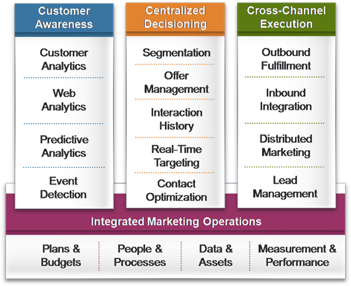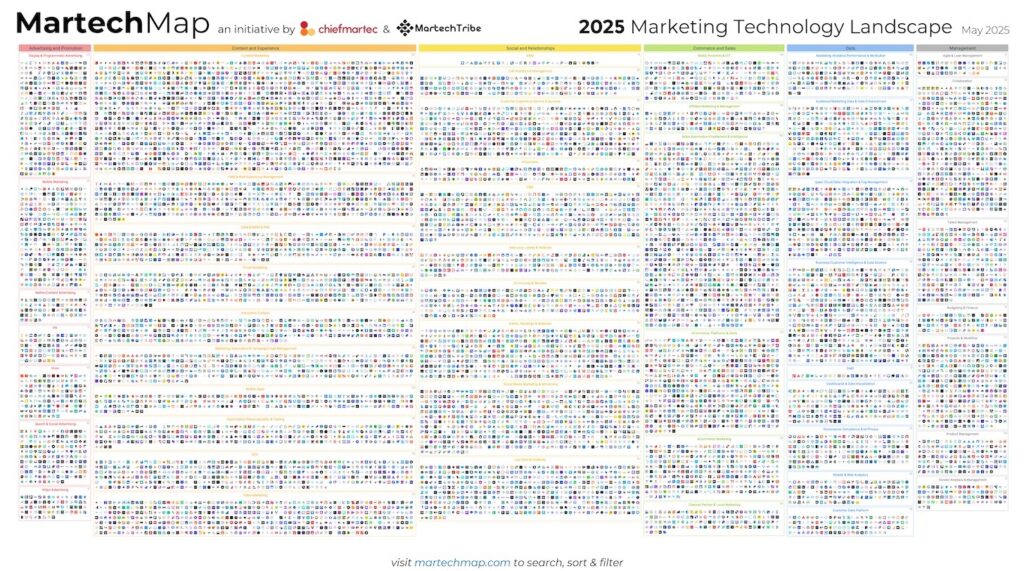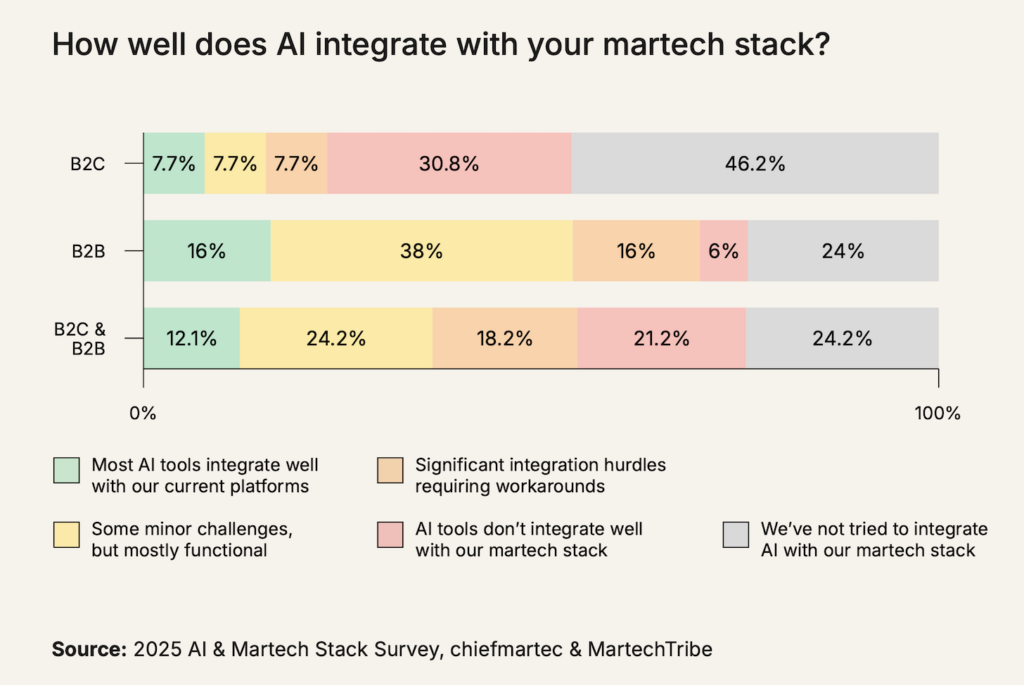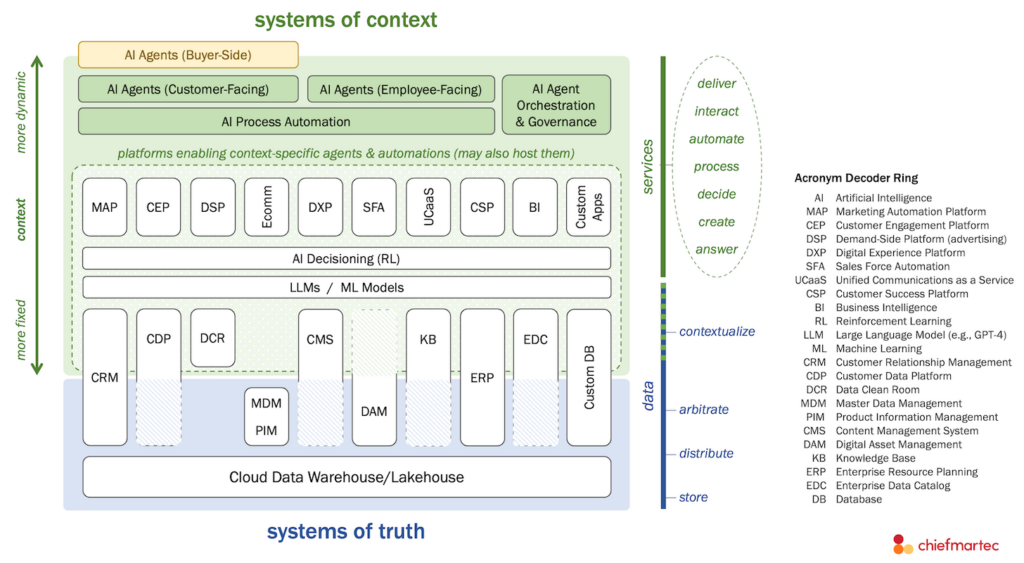Enterprise marketing management (EMM) software is, to a marketer-technologist such as myself, the Holy Grail of 21st century marketing. Like enterprise resource planning (ERP) for operations, its aim is to provide a holistic, integrated view of an organization’s entire marketing universe — an overarching umbrella that enables everyone from the distributed front-line up to the CMO to manage and optimize hundreds or thousands of parallel marketing initiatives across all of the firm’s channels.
It’s a breathtaking proposition in its scope.
It was also a heck of a lot easier to conceive of 10 years ago, when the “online marketing” channel simply meant a company’s brochure-ware web site with a “request info” form. Trade shows, direct mail, advertising, parter programs, etc., were a lot to coordinate, but they were all relatively finite and well-bounded. The marketing world largely revolved around campaigns, each with a defined beginning and end.
The online world, however, has refused to stay in a nice, little box.
Instead, online has exploded into millions of microchannels, with few boundaries, in constant motion, with people sloshing freely among them — often under little or no direct control of the marketer. Beginnings are fuzzy, endings are fuzzier yet. If old marketing was dealing with chess pieces on a board, new marketing is like a chessboard in which new squares and pieces are being added exponentially in all directions all the time. And, oh, the pieces are made of water.
In the online space, structured campaigns are giving way to a vast marketplace of ideas — a kaleidoscope of microcampaigns — that flash into existence, opportunistically, at a frenetic pace, and then evolve and fade with a radioactive half-life, continuing to emit memes, sparking new reactions, in unpredictable ways. These ideas come not only from every nook of the organization — so much for the official marketing department hierarchy — but also from customers, prospects, bloggers, partners, competitors, and energy-drink-saturated teenagers with YouTube accounts.
To the untrained eye, it looks a lot like chaos.
Faced with the daunting complexity of online marketing, EMM vendors — Unica, Aprimo, Alterian, and Oracle (Seibel) being the big ones — largely adopted the Ostrich strategy: ignore it. After all, there’s still been solid need for software-driven automation and resource planning in “traditional” marketing for large companies. Conquer the achievable, save the impossible for another day.
In many ways, this is analogous to the struggle that traditional advertising agencies have had with online marketing. With so much money still spent on television and offline media, they’ve been able to keep their head down on the core of “real marketing”, while upstart search agencies and social media consultants dart around the fractal edges.
But now the edge is overshadowing the core.
Online may still have a minority of the marketing budget, but it has become the dominant channel of influence. And in tough economic times, when the accountability of performance marketing sounds like a darn good idea to most CEOs, the measurability of online marketing has become irresistible.
EMM vendors, large company marketers, and traditional ad agencies alike have all come to a tipping point where they must assimilate or be assimilated with the online marketing Borg. An unstoppable force has collided with an unmovable object. And the resulting fireworks are bound to be fascinating.
Unica, who had a head start on online integration with its acquisition of web analytics leader NetTracker (now NetInsight), has now embraced the collision head on. Earlier this month, they announced a new module — Unica Interactive Marketing — for their Affinium platform. According to the company’s press release, it incorporates 4 key requirements for interactive marketing management:
- customer awareness
- centralized decisioning
- cross-channel execution
- integrated marketing operations
“Marketers know that they must move their communications beyond pure push marketing,” said Elana Anderson, vice president of product marketing and strategy at Unica. “To be successful, they need technologies that can help them effectively interact with their customers. The days of old style campaign management are gone. Today’s marketing solutions must support inbound and outbound interactions in which each marketing action builds on response to previous actions.”
I’ve got two conflicting reactions to this announcement.
First, I’m thrilled: this is the first major release by an EMM vendor to attempt to deeply integrate online into the enterprise marketing umbrella. Even though online marketing is inherently a software-centric domain, there hasn’t been a lot of software at the level above the on-the-ground execution. This next level up has the potential to be an area of great innovation.
On the other hand, I’m skeptical about how practical it will be to have a deterministic strategy “in which each marketing action builds on response to previous actions”, given online’s immense, shifting landscape.
As I wrote about in exponentials in marketing, the multiplicative nature of combinatorics can quickly spiral out of control. With all the choices people can make online, in pretty much whatever order they want, with all the subtle but real variations in audience motivations, perspectives, and preferences, you end up with millions or billions of possibilities. Bucketing those possibilities into serialized, discrete “events” and effectively applying predictive analytics to them is no small feat. And even if the software is technically capable of doing that, how much of its success will depend on the savviness of the marketers implementing and running it? This is as much a cultural challenge as a technical one.
(A marketing technologist should be part dreamer, part skeptic — no?)
On the whole, I think that all Unica Interactive Marketing needs to do is help make the management of enterprise online marketing better — it doesn’t need to perfect. If the people implementing it can strike the right balance between deterministic automation and non-deterministic discovery, providing some structure but not rigidity, this will be a winner.
And like the first generation of any significant innovation, its greatest benefit may be the learning Unica and its clients (and competitors) take away for the second generation to come.
It may not be the Holy Grail, but it’s probably a cup worth sipping from.



